Spiritual Villages in India That Promote Inner Healing
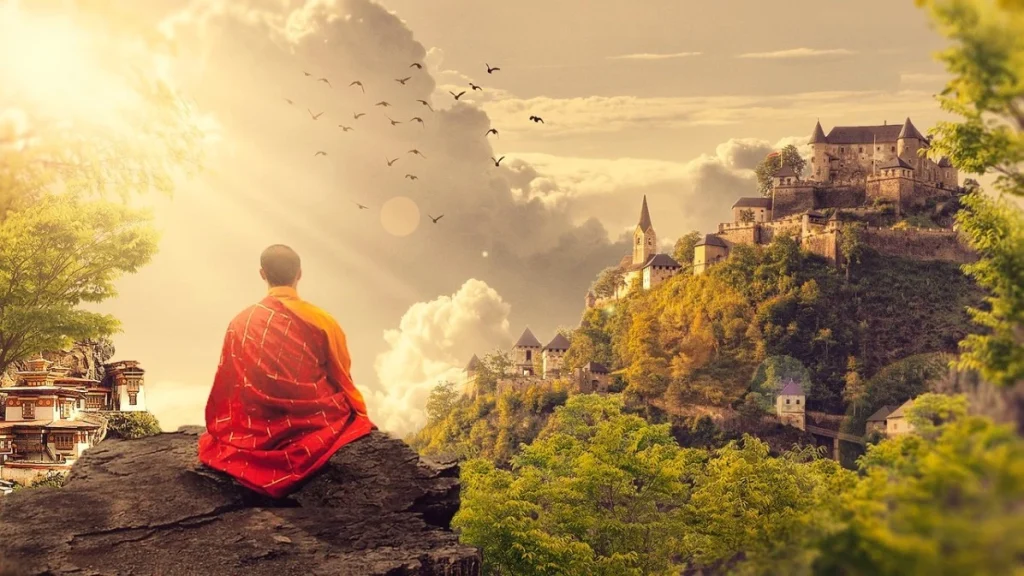
Many tourists are organizing wellness itineraries in 2025, which include spiritual walks through rural India, healing stays, and meditation retreats. These lesser-known villages teach you to live simply, slow down, and rediscover yourself. They are more than just tourist destinations. This comprehensive travel guide covers six of India’s most spiritual villages that genuinely encourage self-healing. 1. Auroville, Tamil Nadu – The Global Village of Conscious Living Why Visit: The concept of unity and inner transformation served as the foundation for Auroville. People come together to live sustainably and mindfully in this international township. Unique Highlight: If you’re into Yoga, meditation, pottery, and eco-workshops, then these all can be incorporated into a visitor’s customized healing schedule. Festivals: To celebrate Auroville Anniversary Day, every February, Auroville hosts meditation events and cultural performances. Foods: Expect plant-based, organic meals prepared using regional ingredients. Pro Tip: To adjust gradually, schedule a 3-day stay. Go to the morning meditation, and spend the evenings at the Matrimandir gardens. 2. Tawang Village Region, Arunachal Pradesh – Peace Amid the Himalayas Why Visit: The rhythm of monastery bells and clean mountain air helps in creating an atmosphere full of healing and mindfulness. It provides a tranquil fusion of natural beauty and Tibetan Buddhist culture. Unique Highlight: Visitors can walk through nearby hamlets, and soak in peaceful mountain sunsets. Participate in morning prayer sessions at the historic Tawang Monastery. Festivals: In January, the Torgya Festival includes masked dances that represent protection and purification. Foods: Enjoy momos, thukpa, and hot butter tea. Its healthy enriched nutrients make it ideal for healing at high elevations. Pro Tip: For peaceful reflection, eat light, drink lots of water, and go to a monastery for evening prayers. 3. Gokarna, Karnataka – The Coastal Sanctuary for Mindful Living Why Visit: Gokarna’s charm is in how it combines spiritual depth with beach tranquility. It is perfect for tourists looking for leisure as well as introspection. Unique Highlight: A leisurely coastal wellness itinerary includes visiting the historic Mahabaleshwar Temple, doing sunrise yoga by the sea, and strolling between beaches along picturesque cliffs. Festivals: Gokarna becomes a hub of devotion during Mahashivaratri. Foods: Try South Indian thalis, banana pancakes, fresh coconut water, Sattvic meals, and herbal teas. Pro Tip: For calm weather, go there between October and March. Reserve lodging close to Om Beach. 4. Rajgir, Bihar – Ancient Healing in the Heart of Magadha Why Visit: Rajgir, a timeless village renowned for its hot springs, Buddhist heritage, and serene hills, was once the capital of the ancient Magadha Empire. It is one of India’s first healing locations. Unique Highlight: Buddha preached at Vulture’s Peak, where you can meditate. You can also take a bath in the Rajgir Kund. Festivals: Every November, music, dance, and spiritual customs come together for the Rajgir Mahotsav. Foods: You stay energized and light throughout the day with simple Bihari meals like litti-chokha, sattu parathas, and seasonal vegetables. Pro Tip: Meditate in the vicinity of the Shanti Stupa. Be mindful of local traditions by wearing modest clothing and taking off your shoes when you’re close to shrines. 5. Meherabad, Maharashtra – A Retreat for Silence and Reflection Why Visit: Meher Baba, who was well-known for his teachings on love and silence, established Meherabad. His legacy is carried on by the village, which welcomes guests looking for simplicity as a means of achieving peace. Unique Highlight: You can read spiritual literature, stroll through peaceful fields, and meditate at Meher Baba’s Samadhi during the day. Festivals: Meher Baba’s Mahasamadhi is celebrated on January 31 of each year during the Amartithi Festival. Foods: Ashram kitchens prepare fresh Maharashtrian cuisine, including jowar roti, lentil dal, and seasonal vegetables. Pro Tip: Schedule your visit during Amartithi Week. Keep a journal with you at all times. 6. Spiti Valley Villages, Himachal Pradesh – The High-Altitude Haven Why Visit: The villages of Spiti, such as Kibber, Langza, and Dhankar, are tucked away in the Trans-Himalayan region and provide an unspoiled setting for profound spiritual healing. Unique Highlight: You can observe the Milky Way’s night sky illumination, learn meditation at isolated monasteries, and stay with local families. Festivals: The Tibetan New Year is celebrated at the Losar Festival with dance, chants, and blessings for rebirth. Foods: Taste warming dishes ideal for mountain climates, such as yak-butter tea, tsampa porridge, and barley soup. Pro Tip: For safer roads, travel between June and September. Bring a tea thermos, sunscreen, and altitude medication. Festivals of Healing Across India Auroville: Peaceful assemblies to foster creativity and solidarity. Tawang: Purification-symbolizing mask dances. Gokarna: The spiritual energy of Mahashivaratri by the sea. Rajgir: Peace festivals that combine music and Buddhism. Meherabad: Silent remembrance of Meher Baba. Spiti: Losar Festival welcoming new beginnings. Pro Tip: For more cultural and spiritual feel, plan your trip especially during regional festivals. Foods That Heal the Soul South India: Coconut-based curries, millets, and herbal teas. Himalayas: For strength, use barley, yak butter, and warm broths. Bihar & Maharashtra: Simple thalis that strike a balance between nutrition and flavor. Avoid overeating or processed food. Eat mindfully, chew slowly, and have gratitude. Pro Tip: Keep a reusable cutlery and bottle with you. Avoid single-use plastic. Travel Planner & Itinerary Ideas Day 1: Arrive in Delhi, Pune, or Guwahati on the first day, then relax. Day 2-3: Go to Gokarna or Auroville for yoga and relaxation. Day 4-5: Travel to Meherabad or Rajgir to participate in meditation sessions. Day 6-7: Conclude in Tawang or Spiti for mountain reflection and stargazing. Pro Tip: Before you travel, always check the climate. Include buffer days in your schedule. Frequently Asked Questions Q1. How long to stay? Three to Seven days. Q2. Are these open to beginners? Yes. It is open to beginners. Q3. When is the best time to visit? October to March. Himalayan villages in June to September. Q4. What is the average budget? ₹1500 – ₹3000 per day except Auroville and Spiti villages. Q5. Are these villages safe? Yes, it is safe. An invitation to slow
Instagram-Worthy Travel in India (2025): Most Photogenic Spots + Guide
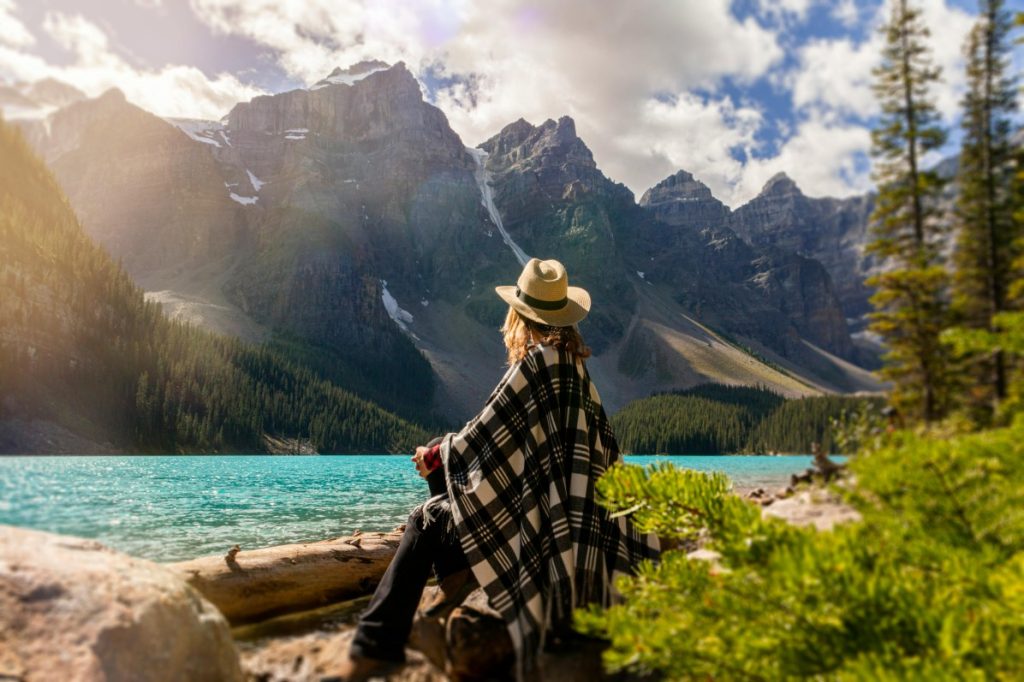
Traveling is now more than just crossing places off your list; it’s also about catching moments to post on Instagram. With India’s abundance of breathtaking scenery, you’ll need to have a picture-perfect travel planner’s mindset to capture every moment, from street-vibe motion to sunrise reflections. No matter if you’re a solo traveler or first time visitor, this guide will help you discover all the popular photogenic destinations of India, along with the best tips and advice regarding when to visit, ideal time, and festivals to attend for best travel photography. 1. Golden Hour Landscapes: Desert, Mountains & Water India offers breathtaking scenery that is worth a double-tap and these locations are one of such most popular spots on travel photography lists. Unique Highlights: For dramatic, minimalist frames, desert dunes provide silhouettes, Himalayan valleys provide layered mountain backdrops, airy skies and lakes create symmetry that works for both photos and reels. Best Destination to Experience: Visit places like Jaisalmer, Pangong Lake, Spiti Valley, Nubra Valley, Rann of Kutch. Pro Tip: Golden hour is the best time for photography. Use the panorama mode. Keep a wide-angle lens. 2. Vibrant Cities & Colourful Streets The pastel-shuttered lanes of Pondicherry, the vibrant pinks of Jaipur, and the chaotic charm of Delhi’s Chandni Chowk are all excellent photogenic locations for narrative photographs. Unique Highlights: Context is added by architectural backgrounds. Street scenes are ideal. Color-coding lanes or houses (think pink, mustard, or turquoise) are best for engaging grids. Best Destination to Experience: Visit places like Jaipur, Pondicherry, Delhi (Chandni Chowk), Varanasi (Ghats & Alleys), Jodhpur (Blue City). Pro Tip: For soft architectural light, visit shortly after sunrise, to see double-colored, reflective wet pavements visit after rain. 3. Heritage + Culture Scenes Heritage sites provide layers of meaning in every frame, which is ideal for a travel planner who wants both beauty and story. Unique Highlights: Ruins, architecture, and carvings provide interesting shadows and natural frames. Better lighting and fewer crowds can be found when visiting in the early morning. Best Destination to Experience: Visit places like Hampi, Khajuraho, Agra (Taj Mahal & Fort), Udaipur (City Palace), Ajanta & Ellora Caves. Pro Tip: Look into photography permissions beforehand. Video and tripods are prohibited in some places. 4. Beaches, Backwaters & Island Dream Scenes If you want to travel with a “relax-and-shoot” mentality, India’s beaches and serene waterways provide both peace and visual appeal. Unique Highlights: Open horizon lines, gentle waves, and water reflections combine to create serene images. Excellent background is available for lifestyle photos. Around coastal towns like Fontainhas and Goa, pastel-colored streets add diversity. Best Destination to Experience: Visit places like Radhanagar Beach (Havelock Island), Kerala Backwaters (Alleppey), Goa, Varkala, Gokarna. Pro Tip: If you plan to take pictures near water, bring a waterproof phone pouch. 5. Festivals, Local Food & Authentic Moments Pictures of people, events, and regional cuisine bring life to our feed. Whether it’s a Rajasthani festival or Delhi street food, these occasions foster genuine engagement in Instagram. Unique Highlights: Local customs, fairs, and festivals like Diwali offer dynamic, vibrant, and emotionally charged scenes. Local food, such as regional specialties and street vendors, gives your grid and story more flavor. Authentic interactions provide distinctive highlights. Best Destination to Experience: Visit places like Jaipur (Holi & Teej Festival), Delhi (Street Food & Fairs), Varanasi (Ganga Aarti), Pushkar (Camel Fair), Kolkata (Durga Puja). Pro Tip: Get the consent before taking close-ups. To separate emotion, use a prime lens or a zoom to a moderate extent. Travel Planner Checklist & Packing for the Photo Hunt Unique Highlights: Always have an extra SD card or memory and a portable charger with you. Carry a waterproof bag or pouch, a spare lens cloth or lens cleaner, and a light jacket or scarf for early morning shoots (particularly on the coast or in the hills). Pro Tip: Each day, create a loose “photo itinerary” by planning one or two important shots (local market, golden hour), allowing extra time for impromptu moments. Best Time for Photography Shoot in India When planning a trip to India, timing is crucial. The light and mood you want your pictures to capture will determine the ideal time for a photography shoot. Winter (October to February) It’s perfect for outdoor shoots because of the clear skies, bright sunshine, and comfortable weather. Best Destinations: Spots like Jaipur, Delhi, Agra, Varanasi, Rann of Kutch, and Goa. Highlight: The gentle, diffused light from the low sun angle is ideal for architecture and portraiture. Summer (March to June) Summer brings vibrant colors and fewer crowds, despite the heat. This season brings out the beauty of the Himalayan landscapes and hill stations. Best Destinations: Ladakh, Spiti Valley, Darjeeling, Sikkim, and Ooty. Highlight: Glacial lakes and snow-capped mountains shine bright during early morning. Monsoon (July to September) Monsoon shots are the best for drama and mood. Anticipate a lot of greenery, mist, and reflections. Best Destinations: Spots like Kerala backwaters, Coorg, Munnar, Meghalaya. Highlight: Soft, cloudy skies soften harsh shadows. It is perfect for narrative shots. Pro Tip: Schedule your activities around sunrise and sunset. The blue hour intensifies contrast and mood, while the golden hour adds warmth. Festival Frames: Capture India in Celebration Holi: Festival of Colours (March) Powder clouds of pink, yellow, and green create impromptu and vibrant frames. Where: Mathura, Vrindavan, Barsana, and Jaipur. Unique Highlight: Early morning temple processions and laughter-filled crowd scenes. Pro Tip: Use a fast shutter speed. Protect your phone or camera with a waterproof case. Diwali: Festival of Lights (October–November) With the use of fireworks, golden lamps, and festive clothing, everything seems to be glittery. Cities are transformed into glittering canvases. Where: Places like Varanasi, Jaipur, and Delhi. Unique Highlight: Take pictures of diyas by rivers or houses that are lit up at night. Pro Tip: To prevent blur in low light, use the night mode or manually adjust the ISO. Pushkar Camel Fair (November) Travellers who enjoy earthy, rustic frames, this desert fair is must-go to spot. Where: Places
Travel for Taste: India’s Best Foodie Destinations for Authentic Regional Cuisines
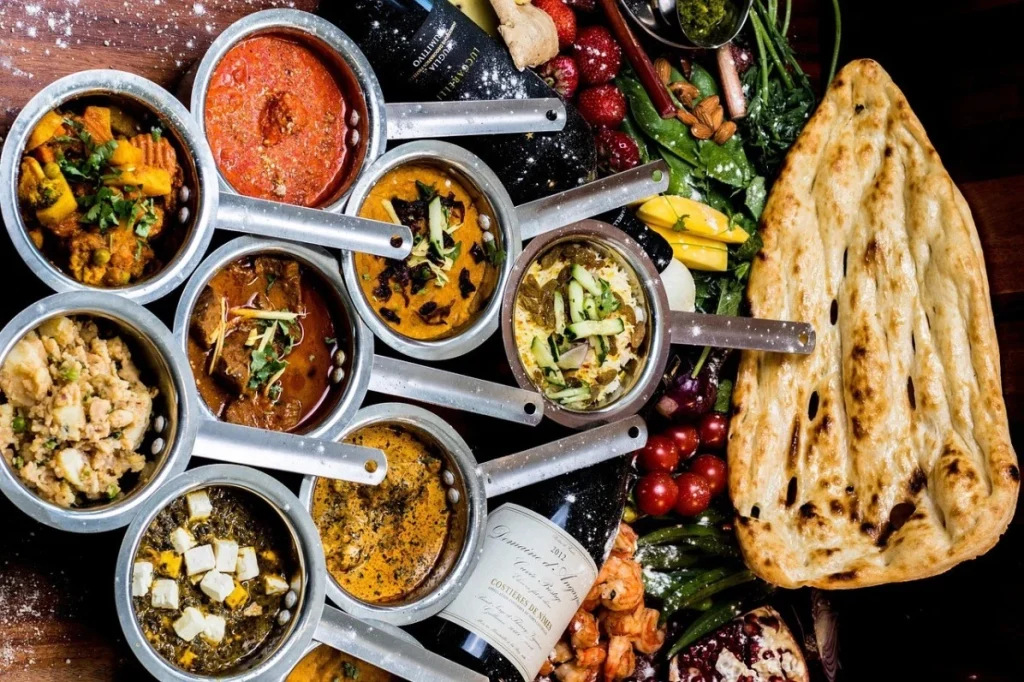
India is a mosaic of flavors, scents, and culinary traditions woven throughout its many states; it is more than just a nation. If “eat where the locals eat” is your motto when traveling, you’re in for a delicious adventure. Planning your Indian culinary trip in 2025 allows you to arrange your foodie travel itinerary according to your preferences, from Kerala’s seafood to Bengal’s sweets. This guide will highlight festivals and cuisine, offer the best travel itineraries, examine India’s most popular foodie destinations, and offer expert advice to make your culinary adventure enjoyable, safe, and unforgettable. Popular Foodie Indian Destinations To Travel in 2025: 1. North Indian Classics: Delhi, Lucknow & Amritsar The northern region of India is a veritable gold mine for those who enjoy rich gravies, kebabs, and hearty breads. Delhi (Old Delhi & Chandni Chowk) Try kebabs, spicy chaat, Banta-style jalebis, and parathas at Paranthe Wali Gali. Take a food walk in the morning; the aroma of freshly made chole and puris begins to fill the air before the sun rises. Pro Tip: Street frying oil can splash onto your fingers, so always have a small piece of tissue and a wet wipe with you. Lucknow (Awadhi cuisine) Taste slow-cooked biryani in the dum style, galouti kebab, and kakori kebab. Recently, Lucknow was chosen to be a Gastronomic Creative City by UNESCO. Visit the old city stalls and try the royal shakarkandi (sweet potato) chaat. Pro Tip: Many royal kitchens prepare fresh food for the evening crowd, so visit between 5 and 8 p.m. Amritsar (Punjabi & Sikh culinary heritage) Stuffed kulchas, chole, lassi, and langar at the Golden Temple (simple, soulful). Try the plain, cheese, and egg varieties of Kulcha King at the city’s chowk. Pro Tip: Go early in the morning for a langar experience; there will be fewer people and more time for introspection. 2. West India & Konkan Coast: Goa, Mumbai, Konkan The western Indian coastal cuisine is a hotspot for tropical flavors, from seafood to curries flavored with coconut. Goa & Konkan region (Malvani cuisine) Try the Goan fish curry, kokum-based drinks, prawn xacuti, and sol kadhi. Coconut is used in many different ways in Malvani cooking. Join a toddy shop feast at dusk, which consists of spicy food and local drinks. Pro Tip: Request “the house fish” from the locals; smaller, fresher catch frequently tastes better than menu items. Mumbai (Street food capital) The streets are lined with stands selling sandwiches, bhel puri, pav bhaji, and vada pav. Near the Marine Drive, sample the seafood “cutting chai & bun maska” combos. Pro Tip: The freshest plates are served by street vendors during the busiest lunch/dinner hours. Gujarat & Rajasthan (Vegetarian & spice-rich) Try the Gujarati dishes dhokla, fafda, and thepla; in Rajasthan, try the dal baati churma and laal maas.Try the Mirchi Bada and Mawa Kachori in Jodhpur. Pro Tip: Look for thali meals off of the main streets; you’ll frequently find hidden dishes and better value for your money there. 3. South India: Kerala, Tamil Nadu & Karnataka Here, the main ingredients are rice, coconut, and spices. Kerala (Malabar, Cochin, South Kerala) Kerala Sadya (banana leaf lunch), Thalassery-style Malabar biryani (Thalassery style), and meen pollichathu (banana leaf-wrapped fish) are not to be missed.Visit the neighborhood toddy shop and try the toddy + spicy fish snack combo. Pro Tip: Southern cuisine is frequently hotter than what the menu indicates, so proceed with caution when ordering spicy. Tamil Nadu Tamil Nadu cuisine includes Kongunadu dishes, filter kaapi, idli-dosa, and Chettinad chicken curry. The unique highlight is the jiggery-sweet Kuzhi Paniyaram, which is served at temple stalls. Pro Tip: If you’re health conscious, request a version with “less oil/ghee” because many dishes are heavy. Karnataka Mysorean fish curry, Coorg pork, and Mysore masala dosa are the best cuisine. A unique highlight is visiting temple kitchens in Udupi to sample sattvic, no-onion, no-garlic dishes. Pro Tip: Keep a small first aid kit for acidity because South Indian cuisine can be tangy. 4. East India & Himalayan Flavors: Bengal, Assam, Sikkim Teas, sweets, and ingredients with a mountain theme are available in these areas. West Bengal & Kolkata Misti doi, rosogolla, puchka (a variation of pani puri), and macher jhol are found in West Bengal and Kolkata. Enjoy your cha (tea) with a Kathi roll on College Street by dusk. Pro Tip: Try sweets in the morning .Since sweets are fresher in the morning and stores sell out quickly by the mid-day. Assam & Northeast Try the jadoh, apong (rice beer), bamboo shoot pickle, and fish tika. Pro Tip: Try regional cuisine at Assamese or Meghalayan homestays. Northeastern cuisine can surprise many visitors, so always inquire if the dish is spicy. Himalayan regions (Sikkim, Uttarakhand) Himalayan cuisine, including paik (pancake), momos, gyapa khatsa (spicy cheese), and thukpa (Sikkim, Uttarakhand).Try chang and butter tea in Sikkim’s monasteries. Pro Tip: Your flavor threshold may change at high elevations, so you may need more salt or seasoning than normal. Food Festivals & Events It can enhance your experience to plan your trip around food celebrations. Bangalore Restaurant Week (Bengaluru) – a carefully planned celebration that features chef menus and discounts. Pro Tip: Many well-known restaurants sell out of their participating slots, so make your reservations well in advance. State Tourism Food Fests – Kerala’s Onam Sadya feasts, the Tamil Nadu Mango Festival, and the Goa Food & Art Festival. Pro Tip: Dates may change, so check the state tourism calendars six months in advance. Local fairs & night markets – Examples include Kolkata’s Adda lanes during Durga Puja and Indore’s Sarafa Bazaar, a nighttime food market. Pro Tip: Keep small change on hand because many street vendors do not accept digital payments. Suggested Food Travel Itinerary “Regional Deep Dive” for one week : Select a region, such as South India. Day 1: Chennai arrival & street snacks Day 2: Food tour of Madurai and Chettinad Day 3: Coimbatore → Munnar — local dishes Day 4: Kochi —
Spine-Chilling Road Trips: India’s Most Haunted Highways
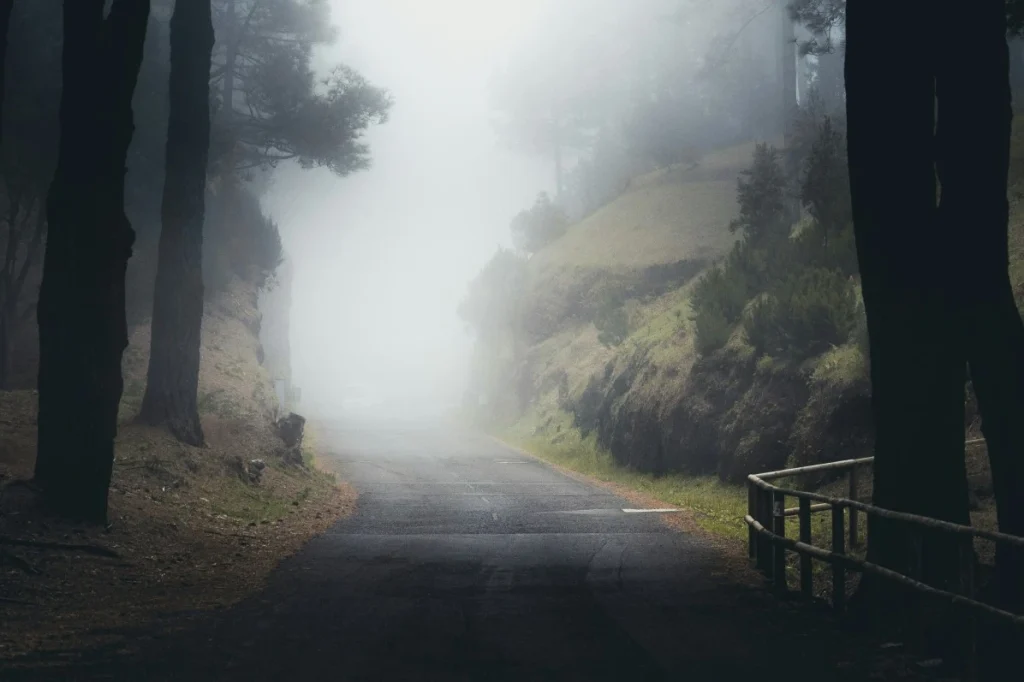
Road trips are full of laughter, freedom, and lifelong memories. But what if there was a hint of mystery and excitement in your next journey? Greetings from India’s haunted highways, where the unknown meets beauty. These highways are more than just roads; they are legends, from the foggy ghats of Maharashtra to the spooky forests of Tamil Nadu. We’ll walk you through some of India’s most haunted roads in this 2025 haunted travel itinerary, along with some terrifying anecdotes, useful travel advice, and even some insider secrets to make your spooky road trip memorable and safe. 1. Kashedi Ghat, Maharashtra – The Mysterious Mumbai-Goa Stretch Kashedi Ghat, situated on the picturesque Mumbai-Goa Highway, appears serene by day but becomes mysterious at night. Locals claim that ghosts roam around here, particularly in the area close to the wooded turns. Drivers have frequently reported seeing figures disappear into thin air or hearing odd knocks on their car doors. Why it’s famous: Unexpected nighttime temperature drops. Tales of vanishing tourists or ghostly women asking for help. Dangerous hairpin turns with thick fog. This road is one of the most difficult in Maharashtra due to its sharp curves, even without the ghosts. Pro Tip: Don’t drive here after dusk. If you do, drive slowly, avoid stopping in isolated areas, and keep your windows slightly open for airflow. 2. Khooni Nala, Jammu–Srinagar Highway – The Valley of Ghostly Whispers Khooni Nala, which translates to “bloody stream,” is home to a number of terrifying legends. Residents think the ghost of a woman who passed away a long time ago still haunts this place. People who drive by at night say they see a shadowy figure by the road or hear her crying. What adds to the fear: The sound of running water echoing through mountains. Low visibility and unexpected fog. Some patches have no mobile network. In spite of the myths, this route is among the most picturesque in North India, with lush hills and waterfalls all around. Pro Tip: Make frequent rest stops and travel during the day. Before you depart, you should always let someone know your route. 3. Baytakhol, Goa – The Woman Who Screams in the Night Although Goa is well-known for its beaches and parties, not many people are aware of Baytakhol, the haunted area between Dhavali and Borim. Numerous residents claim to have seen a woman standing in the center of the street. She vanishes when drivers swerve or try to stop, shocking them or even causing them to lose control of the vehicle. What makes it scarier: The road is silent and encircled by thick trees, which heightens the spooky feeling. It is common to hear unexplained screams late at night. Some say headlights flicker or engines stall near the spot. Pro Tip: Avoid distractions like loud music, never drive alone, and keep your headlights on high beam if you’re planning a haunted nighttime drive. 4. Delhi Cantonment Road – The Lady in White Saree There are horror tales even in the center of the capital. One of the spookiest spots in the city is Delhi Cantonment Road. A “lady in white” who unexpectedly shows up on the road and requests a lift is a common topic of conversation. According to some, if you don’t stop, she will run alongside the car. Why it’s talked about: Numerous eyewitness ghost stories from motorcyclists and drivers. Despite being in a metro area, there are isolated sections. Sudden light failures or engine stalls near haunted turns. Pro Tip: Take the main path. Don’t stop at night if you see someone indicating that you should. Continue to drive steadily and calmly. 5. Thamarassery Churam, Kerala – The Whispering Ghats of Wayanad Thamarassery Churam, a breathtaking ghat pass with eleven sharp hairpin bends, is located between Kozhikode and Wayanad. Despite its beauty during the day, it is rumored to be haunted at night. Passengers describe shadows pursuing their cars and whispers in the wind. According to local legend, the forest here is still guarded by the spirit of a tribal chief. What you’ll experience: Beautiful misty mountains hiding ghostly legends. Even on warm nights, there are sudden chills. For safety, locals light lamps at specific turns. Pro Tip: Play some relaxing music if you’re driving here at night, and avoid stopping to take pictures close to the bends. 6. NH-209, Tamil Nadu – The Forests that Watch You There is a spooky reputation associated with the road that runs through dense forests between Bengaluru and Coimbatore. Travelers have reported seeing flickering lights deep within the dense forest that encircles NH-209. Some even claim that when they got out of their cars, they heard footsteps. Why it feels haunted: Long, lonely stretches without human settlements. Calls from animals that sound like human screams. Patches of sudden fog where visibility is completely zero. Despite the ghostly tales, it’s also one of the most breathtaking drives in South India, ideal for daring adventurers. Pro Tip: Carry snacks and water, and keep a flashlight close at hand. Because wildlife can be dangerous, stay away from exploring the interior of forests. 7. Igorchem Bandh, Goa – The Road That’s Haunted Even in Daylight The majority of haunted stories take place at night, but Goa’s Igorchem Bandh is an exception. Even in the sun, the road feels unsettling, according to locals. People report feeling lightheaded or sensing someone walking next to them at noon. Strangest facts: During the day, people can hear soft murmurs. Near some trees, travelers occasionally faint. Priests in the area advise against crossing alone between 2:00 and 3:00 PM. Pro Tip: If you’re curious, visit with a local guide. Avoid visiting during the hottest times of the day and drink plenty of water. Planning Your Haunted Road Trip (2025 Edition) Make careful plans if you’re prepared for India’s haunted road trip. Despite the excitement of these roads, safety always comes first. Here’s how to plan your haunted road trip: Drive during the day: Although thrilling,
Top Remote Work Destinations: India & Global Picks
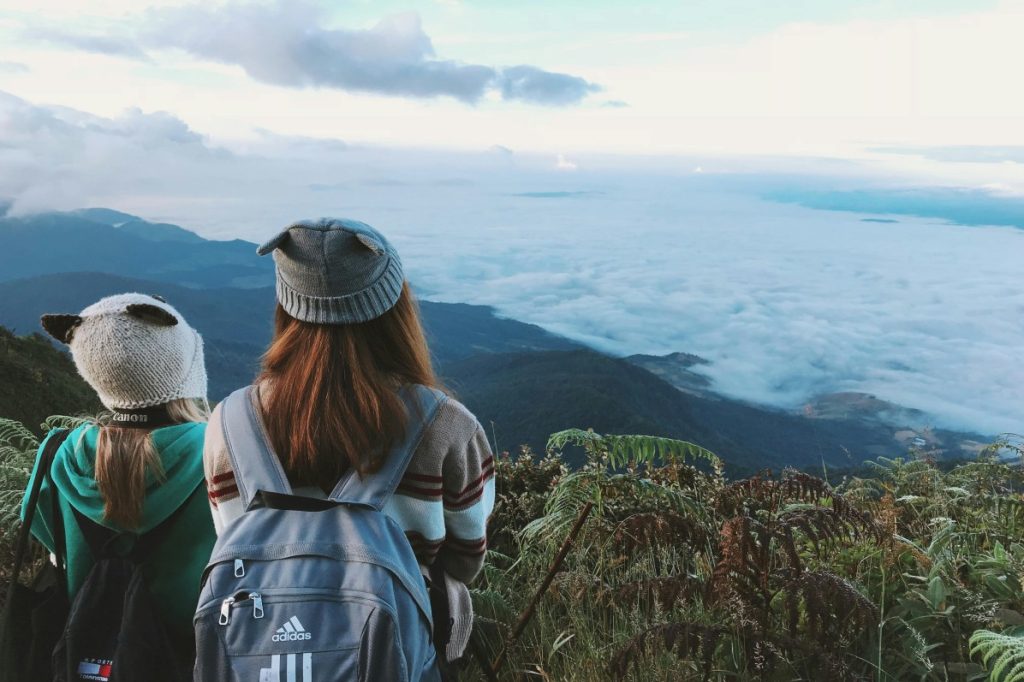
By 2025, remote workers won’t have to decide between productivity and travel. Imagine working from a chic European café, a beachside villa, or a mountain cottage. This blog is your go-to resource for workation travel planning, offering a combination of SEO-rich advice and an itinerary to assist you in choosing locations (both domestically and internationally), estimating expenses, and organizing a smooth remote work vacation. This remote work travel guide covers everything, whether you’re looking for cities, beaches, or mountains. 1. Criteria for Choosing a Good Workation Spot Here are the main filters you should use before diving into workation destinations: Reliable power backup and internet Coworking spaces and cozy work arrangements Recreation and local culture in balance Stay permits and visa friendliness Living expenses and the affordability of housing Pro Tip: Before making a reservation, inquire about upload and download speeds from hosts, look up reviews regarding power outages, and ask for a specific desk or quiet corner. 2. Top Workation Destinations in India Here is the list of top workation destinations in India: 2.1 Goa (North & South) Goa is still the best place to work and play. There are a lot of cafes and coworking spaces in the Anjuna, Vagator, and Saragoo areas. There are more peaceful areas and places to stay in Goa. Excellent balance between working in the mornings and taking walks on the beach or listening to live music in the evenings. Pro Tip: Book a villa or guesthouse with a generator or UPS. Avoid beach shacks without backup electricity. Verify that your room has Wi-Fi, not just the common areas. 2.2 Uttarakhand: Rishikesh, Nainital, Mukteshwar In the Tapovan, Laxman, and Jhula areas, Rishikesh combines a spiritual atmosphere with cafes. Nainital and Mukteshwar provide calmer work environments and serene forest/lake views. Pro Tip: Mobile signals vary in hilly terrain. If necessary, keep a 4G hotspot and a signal booster with you. 2.3 Himachal & Lesser-Known Valleys Jibhi (Banjar Valley): A unique, peaceful, and rising workation gem in the Banjar Valley. Sainj Valley, Kalga, Janjehli: Affordable, tranquil, and perfect for extended visits. Manali / Old Manali: Digital nomads are familiar with Manali, also known as Old Manali. Pro Tip: Altitude, temperature, and heat all have an impact on equipment in mountainous regions. Carry extra cables and travel adapters, and use surge protectors. 2.4 Other Indian Gems: Coorg, Darjeeling, Pondicherry Coorg, Karnataka: Nature hikes, peaceful retreats, and stays on coffee plantations. Darjeeling, West Bengal: misty hills, tea gardens, serene working environment. Pondicherry: slower tempo, seaside cafes, and French colonial streets. Pro Tip: Always look for monsoon or seasonal windows. Off-peak months frequently offer better bargains and fewer crowds in the hill and coffee regions. 3. Top Workation Destinations Abroad Here is the list of top workation destinations at abroad: 3.1 Southeast Asia: Bali, Chiang Mai Bali, Indonesia: Ubud and Canggu are very well-liked by digital nomads in Bali, Indonesia. Chiang Mai, Thailand: The expat community, coworking culture, and affordability of Chiang Mai, Thailand. Pro Tip: Verify permits and visa requirements. Visas for digital nomads are now available in many countries. Additionally, check the internet when you get there and switch to a backup if necessary. 3.2 Europe: Lisbon, Barcelona, Tallinn Lisbon, Portugal: River views, pastel houses, robust nomadic infrastructure. Tallinn, Estonia: clean infrastructure, tech-friendly, and digital services. Barcelona, Spain: It is a seaside city with a thriving coworking community and cafe culture. Pro Tip: Because Europe tends to be more expensive, pick out more affordable neighborhoods and longer-stay deals. Verify the time zone overlap for your employers and clients as well. 3.3 Latin America: Medellín, Playa del Carmen Medellín, Colombia: A “City of Eternal Spring” with a pleasant climate, a vibrant café culture, and excellent connectivity. Playa del Carmen, Mexico: Beach, jungle, and coworking spaces in Playa del Carmen, Mexico. Pro Tip: Verify that your destination is covered by your travel and health insurance. Have a backup eSIM and a local SIM on hand at all times. 4. Sample Itineraries & Duration Ideas 4.1 India Workation Itinerary (7–10 days) Day 1–2: Arrive, get settled, and check connectivity Day 3–6: Work as usual with scheduled breaks (spend the evenings exploring local sites) Day 7:Rest, local sightseeing, and a buffer day Optional Day 8–10: Travel to neighboring locations and modify work schedules 4.2 Abroad Workation Itinerary (10–14 days) Day 1–2: Jet lag, neighborhood exploration, and coworking space discovery on the first two days. Day 3–9: Core work time, schedule outings for weekends Day 10–12: Longer local trips (day tours, nearby towns) Final Day: Wrap work, pack, depart Pro Tip: Avoid scheduling heavy tasks on the day you arrive or depart; instead, always allow buffer days at the beginning and end of your trip. Utilize those for recovery or setup. 5. Cost, Budget & Planning Tips Accommodations (homestays, boutique hotels, or guesthouses) Fees for coworking spaces and cafés Local transportation, food, and SIM/internet top-up Costs of a visa or permit Travel and health insurance When compared to city living, many places to work in India can be reasonably priced. Costs vary greatly abroad; Southeast Asia is typically less expensive than Europe or Latin America.. Pro Tip: Always negotiate for weekly or monthly stays, as these frequently offer a 20–30% reduction over nightly rates. Additionally, pick lodgings that offer “long stay” or workation packages, choose accommodations with workation packages. 6. Workation Essentials & Productivity Hacks Reliable backups: external battery, portable Wi-Fi Noise cancellation (white noise app, earphones) Strict routines and time blocking (mornings for deep work) Combination of local SIM and eSIM Pro Tip: Make use of the “office hours” model. Set aside 2-3 hours for meetings and calls, and make sure that these times are unoccupied. Additionally, always keep a power bank, an extra charger, and a USB hub with you. Frequently Asked Questions (FAQs) Q1. What is the average cost of a workation per day? The destination determines this. A daily budget of ₹1,500 to ₹4,000 may be adequate in India (accommodation + food + necessities). Depending on
Beginner’s Guide to Safe Travel: 16 Rules First-Time Travelers Should Never Ignore
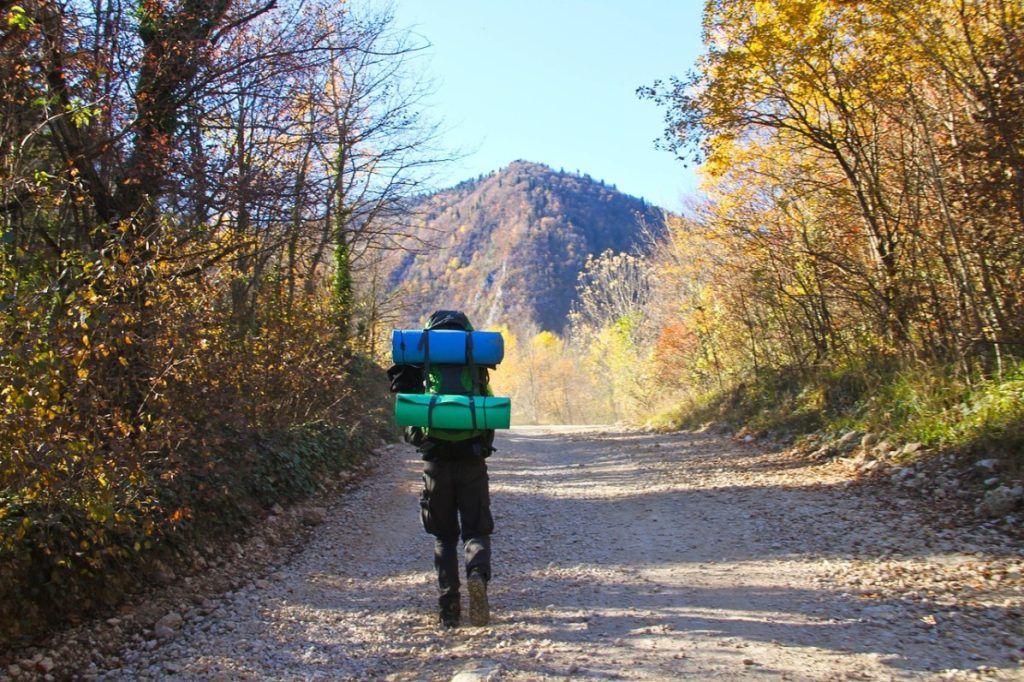
Traveling is a bold and liberating experience that fosters self-reliance, self-discovery, and enduring memories. Whether you’re a seasoned traveler or organizing your first solo trip, a little safety planning can make the trip safer and more pleasurable. You will meet people from different backgrounds, try new foods, and learn about cultures that are beyond anything you could have imagined. However, for beginners, the excitement usually outweighs the importance of safety planning. The goal of this beginner’s guide to safe travel is to prepare a safer trip itinerary for first time travelers. These safety guidelines will make your trip unforgettable for all the right reasons, from digital security and cultural etiquette to packing tips and travel insurance. Following these beginner’s travel safety rules ensures that your first journey is filled with joy, not worry. 1. Research Before You Go A little planning makes a big difference. Learn about the local language, transportation, neighborhoods, and emergency procedures. To avoid offending someone unintentionally, educate yourself on local traditions. Researching in advance helps travelers avoid danger, time wastage, and scams. It is one of the best safe travel tips. Pro Tip: Use apps like Rome2Rio or Google Travel to plan your itinerary. Always find out if your destination requires any special permits or visas. 2. Get Travel Insurance Travel insurance serves as your lifeline for safe travel and is more than just paperwork. The cost of a single medical emergency overseas can reach thousands. Additionally, insurance covers theft, lost luggage, and cancellations. Pro Tip: If you plan to participate in adventurous activities like hiking or water sports, choose policies with “adventure coverage” for benefits. 3. Keep Digital & Physical Copies of Documents Having backup copies of your passport, visa, airline tickets, and insurance is always a good idea. Store printed copies on cloud services and keep them separate. Pro Tip: Keep a laminated sheet of paper with the contact details and your embassy’s information in your wallet. 4. Manage Your Money Smartly Avoid carrying too much cash. The safest way to carry money while travelling is by using prepaid forex cards, digital wallets, and a mix of debit and credit cards. Money should be kept in different locations for your wallet, bag, and hotel locker. Pro Tip: Always keep small change on hand for tips, food vendors, and local transportation. 5. Stay Aware in Public Transport Be attentive during your travel in public transportations like buses, trams, and crowded metros. Keep an eye on your stations & schedules. Pickpocketing or thefts are common in these areas. Pro Tip: Plan on using verified ride-hailing services or registered taxis if you’re running late. 6. Blend In With Locals Those tourists who stand out are frequently targeted. Wear loose clothing, but stay away from branded bags, expensive watches, and flashy jewelry in unfamiliar places. Pro Tip: Learning five to ten basic local words makes you more approachable and secure. 7. Carry a First Aid & Hygiene Kit Travel can be ruined by minor problems like headaches or stomachaches. When pharmacies are not open, a first aid kit saves time. Bring masks, sanitizer, medications, and reusable water bottles. Pro Tip: Important medications should be kept in your carry-on rather than checked luggage. 8. Share Your Itinerary Always inform someone of your travel itinerary. This is crucial for the safety of solo travelers in particular. Pro Tip: When traveling a long journey, use Google Maps or WhatsApp to share your current location in real time. 9. Stay Cautious Online WiFi in public places is convenient but dangerous. Passwords or banking information are easily stolen by hackers. Pro Tip: Avoid making payments online over public networks and use a VPN for safer browsing. 10. Try Local Food Safely Although food is cultural, cleanliness is important. To test the stomach’s tolerance, start with small portions. Pro Tip: Restaurants with consistent local crowds are always a good indicator of tasty and safe food. 11. Know Emergency Numbers Make a note of the local embassy, ambulance, and police contacts. Put them in writing as well; don’t rely just on your phone. Pro Tip: The universal emergency number 112 is currently in use in many countries. 12. Choose Safe Accommodations Make a reservation after reading several reviews. Examine the area, the security features, and the connectivity. Make sure wherever you stay, they are secure and have locks. For low-budget travelers, hostels, homestays, and dharamshalas are good options. Pro Tip: Hostels exclusively for women or accommodations close to major roads are safer for lone travelers. 13. Solo Travel Safety Although it is liberating, traveling alone calls for extra caution. Avoid going for a late-night stroll by yourself, don’t tell strangers your entire itinerary, and follow your gut. Pro Tip: Keep a personal alarm, pepper spray, or whistle on hand in case of an emergency. 14. Packing Essentials A first-time visitor makes the mistake of overpacking. Only bring items you’ll need, and keep necessities close at hand. It is essential to have a portable charger, a water bottle, a travel pillow, a sturdy backpack, and a universal adapter. Pro Tip: To prevent overweight baggage, use packing cubes to organize it. 15. Food & Water Safety Water-borne diseases are common for beginners abroad. Limit your intake to cooked food and sealed bottles of water. Don’t eat salads, ice cubes, or undercooked meat in new places. Pro Tip: Keep rehydration salts on hand to prevent dehydration. 16. Trust Your Instincts Your best defense is intuition. If you sense that someone, a place, or a deal is unsafe, leave. Pro Tip: Safety measures should always come before courtesy. FAQs Q1. What is the best safe travel tip for beginners? Research your destination and stay alert at all times. Q2. Should beginners always buy travel insurance? Yes. Emergencies can occur on even short trips; insurance reduces stress and costs. Q3. What should I pack for safe travel? It is advised to keep a secure wallet, reusable water bottle, universal adapter, and first aid kit. Q4. How can I stay
Top 7 Iconic Movie Locations Around the World You Can Actually Visit in 2025
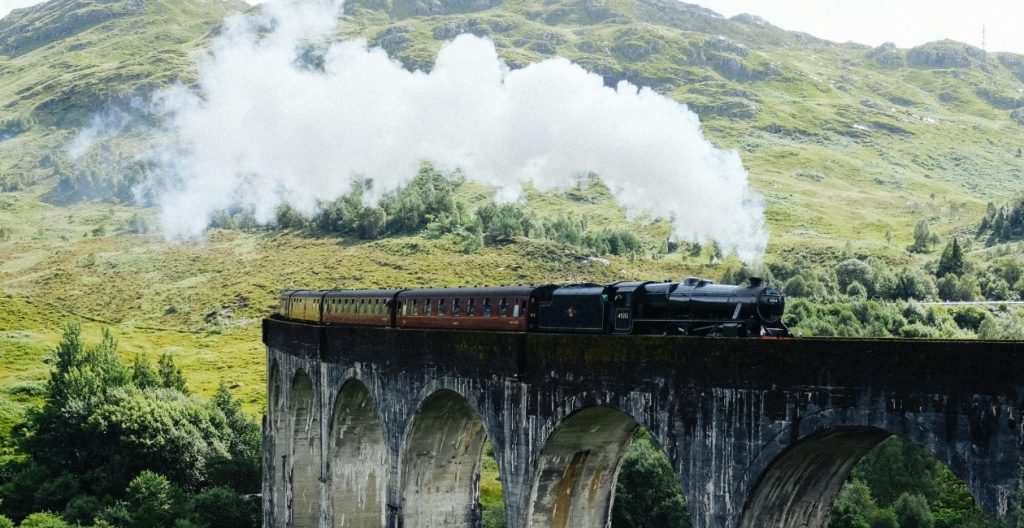
Introduction: Travel Itinerary Inspired by Movies Films are journeys, not just stories. Travelers dream of visiting places that are so vividly portrayed in many films. Fortunately, a number of famous movie sets are accessible for exploration. With the right movie-themed itinerary, these locations enable you to enter your favorite movies, whether you enjoy romantic dramas, epic adventures, or fantasy sagas. This 2025 guide lists seven most iconic movie locations you can actually visit, along with activities, food, and insider tips. 1. Ronda, Spain (Zindagi Na Milegi Dobara) The audience experiences the same rush of adrenaline as Kabir (Abhay Deol), Imran (Farhan Akhtar), and Arjun (Hrithik Roshan) as they overcome their fears by skydiving in Ronda, Andalusia. It was more than just a plane jump; it was about conquering one’s inner demons, and Ronda’s breathtaking cliffs made it an event to remember. Why Visit? One of the oldest towns in Spain is Ronda, perched dramatically above El Tajo Gorge. It combines history and excitement with its whitewashed streets, bullring culture, and Puente Nuevo bridge. Here, adventure lovers can still skydive and follow the ZNMD trio’s exact path. In addition, Ronda hosts traditional Andalusian festivals that allow visitors to experience the music and dance of the region. Pro Tip: Take pictures of Puente Nuevo at sunset for the most cinematic effects; the lighting makes the cliffs glow like a movie backdrop. 2. Pangong Lake, Ladakh, India (3 Idiots) Every Bollywood fan’s heart is engraved with the scene from 3 Idiots where Pia (Kareena Kapoor) races across barren landscapes on her scooter to meet up with Rancho (Aamir Khan) by the glittering Pangong Lake. Searches for the 3 Idiots Ladakh shooting location have increased dramatically since the movie’s release, making Pangong one of the most visited Bollywood movie shooting locations in India. Why Visit? At 14,000 feet above sea level, the lake changes colors from blue to green to violet, creating an unreal scene. Small cafes now even offer “Rancho’s Café” specials, which are named after the character. The site attracts Bollywood fans, bikers, and adventure seekers alike. The area has strong ties to Ladakhi culture and is home to monasteries, regional handicrafts, and age-old customs. Pro Tip: Spend the night at a lakeside eco-camp. Here, stargazing is as enchanted as a scene from a movie. 3. Hobbiton, Matamata, New Zealand (The Lord of the Rings & The Hobbit) It wasn’t just fantasy when Frodo, Sam, Merry, and Pippin danced in the Shire; it was Matamata in New Zealand turned into Middle-earth. For fans around the world, the Party Tree, the rounded Hobbit doors, and the undulating hills became legendary. Director Peter Jackson loved the landscape so much that the set was left standing, and today it’s one of the most famous movie locations you can visit. Why Visit? Hobbiton is like being in a book when you walk around it. You’ll discover small Hobbit holes, the famous Bag End where Bilbo starts his journey, and the Green Dragon Inn where you can enjoy themed drinks. The set is detailed down to laundry on clotheslines and smoke from chimneys, it’s immersive storytelling comes to life. With regional celebrations of Tolkien, including themed marathons, festivals, and souvenirs, New Zealand has embraced its identity as “Middle-earth.” Pro Tip: Reserve a twilight banquet tour. You can dine like a Hobbit under lanterns, it’s less crowded, and the lighting is fantastic for photos. 4. Dubrovnik, Croatia (Game of Thrones) Few cities have blended fiction and reality as well as Dubrovnik did with Game of Thrones. From Tyrion’s cunning in Red Keep to Cersei’s notorious “Walk of Atonement” on the Jesuit Stairs, fans recognize the medieval city walls as King’s Landing right away. Due to its centuries-old forts, winding alleys, and views of the Adriatic, Dubrovnik became one of the most iconic Hollywood filming locations of last decade. Why Visit? Beyond its fandom, Dubrovnik is a UNESCO World Heritage Site that combines architecture, history, and nostalgic film. You can either stand at Fort Lovrijenac, which served as Red Keep, or walk the same walls from which Daenerys once gazed. The city also holds summer festivals that offer live theater and music, making it the ideal place to experience its culture outside of the screen. Pro Tip: Try taking a tour of the Game of Thrones filming locations in Dubrovnik. Many guides are extras who appeared in the show and share behind-the-scenes stories that you won’t find online. 5. Ooty & Nilgiris, Tamil Nadu, India (Chennai Express, Kuch Kuch Hota Hai, Barfi!) In Chennai Express, Ooty’s toy train became famous due to Shah Rukh Khan and Deepika Padukone’s amusing banter on board the Nilgiri Mountain Railway. Previously, Barfi! used its colonial charm, while Kuch Kuch Hota Hai preserved its misty hills and pine forests. For many years, Ooty has been Bollywood’s go-to location for romance, comedy, and drama. Why Visit? Ooty blends views of the mountains, tea gardens, waterfalls, and colonial churches. Taking the Nilgiri train is a UNESCO heritage experience in addition to being a nostalgic movie ride. For fans who grew up watching these movies, every tunnel and turn feels familiar. The region’s charm is enhanced by the yearly Ooty Summer Festival, which features flower displays and tea tastings. Pro Tip: When traveling uphill, take a seat on the left side of the toy train for the most cinematic views, it’s the same angle seen in Chennai Express. 6. Petra, Jordan (Indiana Jones and the Last Crusade) Indiana Jones discovers the Holy Grail in Petra’s famous Treasury façade. Although the sandstone marvel has appeared in numerous movies, Indy made it famous. For Indiana Jones fans, walking through Siq, the breathtakingly winding canyon that leads to Treasury feels like stepping directly into the movie, hearing Indy’s footsteps echo against the sandstone walls. Why Visit? Petra is one of the New Seven Wonders of the World and a UNESCO World Heritage Site. With a rich history of trade, architecture, and desert survival, the city has been inhabited for
Top 10 Most Haunted Places in the World You Can Visit in 2025
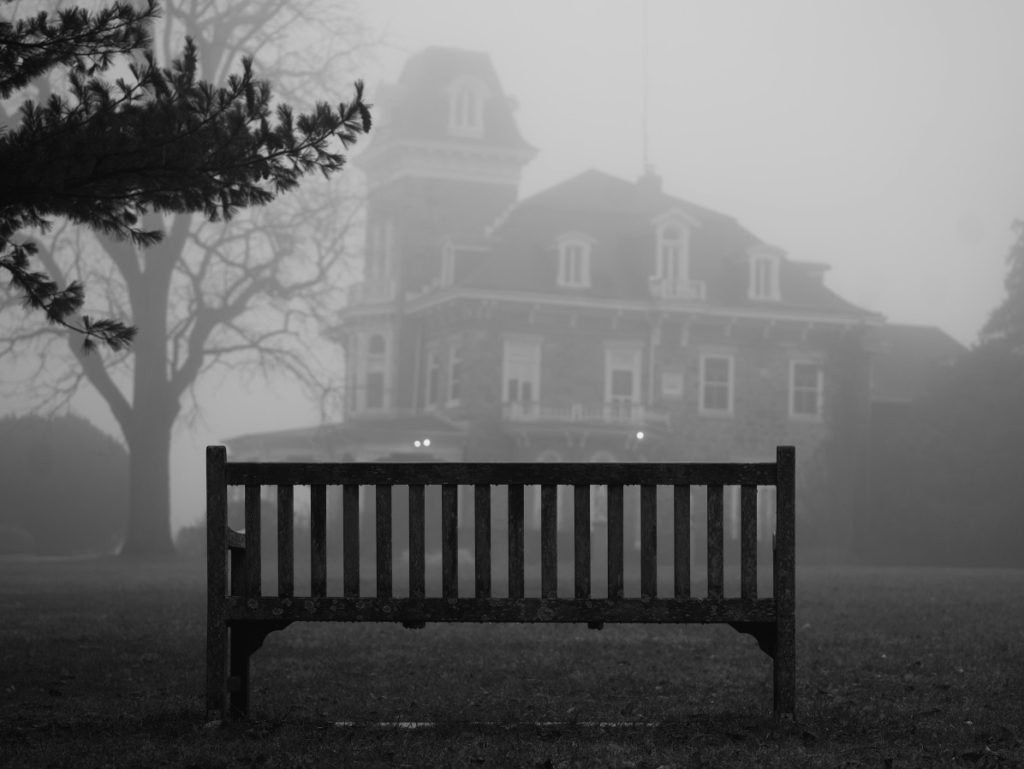
Introduction: Haunted Travel Itinerary for 2025 It’s not always beaches and mountains that make travel fun. Sometimes it’s about mysteries. Imagine a haunted travel itinerary that takes you to the scariest places in the world on a list of haunted towns. From creepy castles to spooky forests, these places offer unforgettable trips full of ghost stories, unique activities, local food, and festivals. Here is a full list of the world’s most haunted places that you can visit in 2025. 1. Bhangarh Fort, India Many people call Bhangarh Fort the “most haunted place in India” because of the stories about its haunted ruins and ghosts. People aren’t allowed to enter the fort after dark, but you can look around during the day. Activities to Try: Visit the crumbling temples inside the fort, look for handmade goods in the villages nearby, and eat traditional Rajasthani cuisine. Unique Highlight: Combines scary folklore, history, and architecture. Pro Tip: Get a local guide to help you find secret spots and learn about hidden stories. Avoid missing secret spots. 2. The Tower of London, UK Royal executions and incarcerations took place at this famous location. It’s one of the spookiest places in London because of ghost sightings, particularly of Anne Boleyn. Activities to Try: See the Crown Jewels, go on the Yeoman Warders’ ghost stories tour and visit nearby pubs said to be haunted. Unique Highlight: A unique blend of paranormal experiences and British history. Pro Tip: To save time and money, purchase tickets in advance online. 3. Eastern State Penitentiary, USA The abandoned prison in Philadelphia, renowned for its eerie cellblocks. Ghostly whispers are frequently captured on tape by paranormal investigators. Activities to Try: Take part in live ghost hunts, visit art exhibits within the prison, or attend the “Terror Behind the Walls” Halloween festival. Unique Highlight: A prison-turned-cultural center with spooky nights. Pro Tip: For the best spooky haunting experience, visit during Halloween. 4. Château de Brissac, France Known as the “Giant of the Loire Valley,” Lady in Green haunts this castle. Activities to Try: Join evenings of classical music, take a wine tour through the castle vineyards, or spend the night for a chilling adventure. Unique Highlight: Where royal luxury meets eerie legends. Pro Tip: Make reservations for overnight stays as early as possible because they are limited and in high demand. 5. Monte Cristo Homestead, Australia This historic homestead is regarded as Australia’s most haunted house. Ghostly figures and glowing lights are reported by visitors. Activities to Try: Take part in escorted ghost tours, visit neighboring historical sites in Junee, and taste Australian bush cuisine. Unique Highlight: Tours are more intimate because it is still privately owned. Pro Tip: For the spookiest tales, take their candlelit night tour. 6. Edinburgh Castle, Scotland Packed with legends and history, Edinburgh Castle is home to a headless drummer and prisoner ghosts. Activities to Try: Take part in ghost walks in subterranean vaults, visit the Scottish National War Museum, and enjoy local bagpipe performances. Unique Highlight: A haunted fortress that hosts annual cultural festivals. Pro Tip: Put on layers of warmth. Even in the summer, Scotland’s nights can get cold. 7. The Stanley Hotel, USA Stephen King’s The Shining was inspired by this Colorado hotel. At night, guests frequently hear phantom piano notes. Activities to Try: Spend the night in a haunted room, take a ghost tour, and stargaze in the Rockies around the hotel. Unique Highlight: Combines paranormal travel with a luxurious stay. Pro Tip: For the ultimate ghostly experience, ask for Room 217. 8. Aokigahara Forest, Japan Known as the “Suicide Forest,” this dense forest is hauntingly silent and is said to be haunted by ghosts. Activities to Try: Discover the nearby lava caves, take a hike along the picturesque Mount Fuji trails, and sample authentic Japanese street cuisine in the nearby towns. Unique Highlight: A forest where the stillness itself seems supernatural. Pro Tip: For safety and respect, always travel with a certified guide. 9. Poveglia Island, Italy This Venetian island, notorious for its troubled past, was once a plague quarantine station. It is regarded by many as one of the most haunted islands in the world. Activities to Try: Reserve private boat tours, savor local seafood, and discover undiscovered canals in Venice. Unique Highlight: A completely abandoned island with chilling ruins. Pro Tip: Schedule your tours in advance because access is seasonal and limited. 10. Hoia Baciu Forest, Romania This forest in Transylvania is known as the “Bermuda Triangle of Romania.” Ghost encounters and UFO sightings have made it famous. Activities to Try: Take part in paranormal workshops in Cluj-Napoca, go on night hikes, and taste Romanian street food nearby. Unique Highlight: A circular clearing where no trees grow. Pro Tip: For safety, never go alone; always go in groups. Haunted Travel Planner (Sample Itinerary) 2-Day Haunted Itinerary (Edinburgh, Scotland): Day 1: Tour of Edinburgh Castle and Old Town Ghost Walk. Day 2: Exploration of vaults and a night of haunted storytelling in a pub. 3-Day Haunted Itinerary (For USA Visitors): Day 1: In Philadelphia, start with the exploration of the Eastern State Penitentiary. Day 2: Take a nighttime ghost tour and drive to the Stanley Hotel. Day 3: Dedicate the day exploring nearby Colorado ghost towns. Pro Tip: To balance out the spooky experience, always include a daytime sightseeing activity. Haunted Travel Costs & Budgeting It’s not always expensive to explore haunted places. Castles and prisons charge $20 to $100 to enter. Guided ghost tours are extra, and haunted hotels range from $150 to $300 per night. Pro Tip: Night tours have their own budget and are typically not covered by daytime tickets. So better to separate a budget for night tours with day tours. Festivals & Food at Haunted Destinations India: After visiting Bhangarh, taste fiery Rajasthani thalis. UK & USA: Celebrate Halloween festivals with costumes, themed drinks, and ghost hunts. Japan: Trips are made more memorable by the seasonal Japanese snacks like takoyaki and yakitori near Aokigahara. Romania:
Vaishno Devi Travel Guide 2025: Cost, Itinerary, Tips & How to Plan Your Yatra
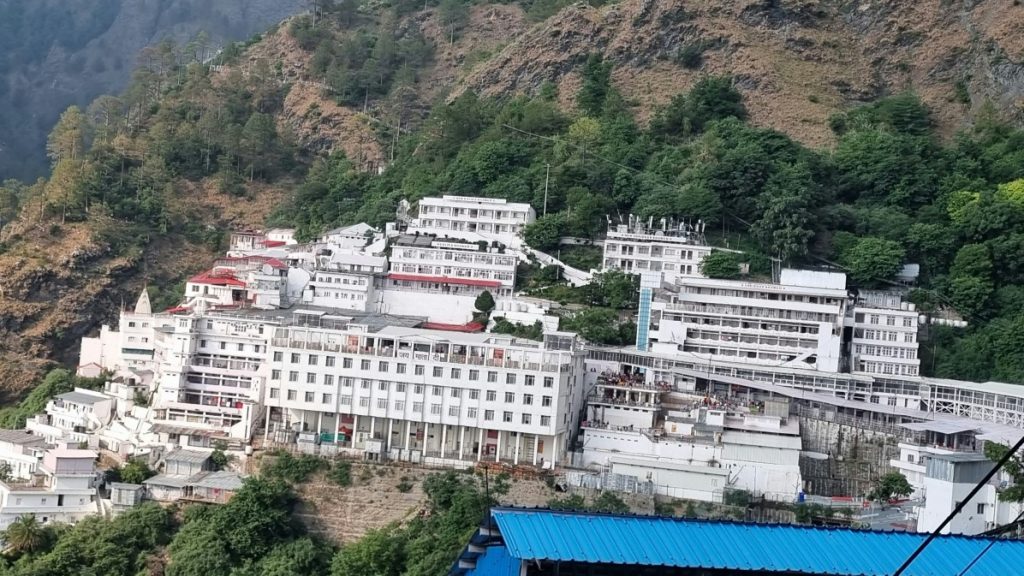
What’s in this Blog Why Vaishno Devi is a Must-Visit Pilgrimage How to Reach Vaishno Devi Best Time to Visit Vaishno Devi Yatra Registration & Permits Trip Cost & Budgeting Where to Stay (Katra & Nearby) Itinerary Suggestions – 2-Day and 3-Day Trip Plans Helicopter, Pony & Porter Services Things to Carry & Travel Tips Nearby Places to Visit FAQs Final Thoughts Why Vaishno Devi is a Must-Visit Pilgrimage Going to Vaishno Devi in 2025 is more than just a religious pilgrimage. It’s an experience rich in Himalayan beauty, culture, and faith. Vaishno Devi, one of India’s holiest shrines, is tucked away in Jammu’s Trikuta Hills. In the eyes of pilgrims, Mata Vaishno Devi grants the desires of those who come with pure devotion. In addition to the spiritual aspect, the trip offers beautiful trekking routes, friendly locals, and the opportunity to discover hidden treasures. This vaishno devi travel guide includes all the necessary information for anyone planning a vaishno devi trip 2 days itinerary or vaishno devi trip 3 days itinerary. Pro Tip: For smoother planning, reserve your lodging and yatra registration at least two months in advance. How to Reach Vaishno Devi There are multiple transport options to reach Vaishno Devi : By Train: The closest significant train station is Jammu Tawi, which is 48 kilometers from Katra. It is connected to Delhi, Mumbai, and Kolkata by regular trains. By Flight: The closest significant airport is Jammu Airport, which is 50 km away. From there,buses and taxis are too frequently available to travel to Katra . By Road: As Katra has brilliant road connections to Srinagar, Udhampur, and Jammu to travel by road. There are plenty of deluxe buses and taxis too. The actual yatra starts with a 13-kilometer trek to the Bhawan (shrine) from Katra. Pilgrims have three options: walk, rent ponies, or take a helicopter. Pro Tip: To prevent travel fatigue before beginning the trek, get to Katra one day early. Best Time to Visit Vaishno Devi Although the shrine is open all year, there are special experiences to be had in different seasons: Spring (March–May): Beautiful scenery and pleasant weather. Monsoon (July–September):Fewer tourists, but be cautious of landslides. Autumn (October–November):Clear skies and joyous occasions like Navratri. Winter (December–February):snow-covered pathways, fewer tourists, and serene darshan. Pro Tip: Plan during Navratri, but make reservations well in advance, if you want a festive atmosphere. Yatra Registration & Permits Before beginning the yatra, each pilgrim is required to complete the Vaishno Devi online registration. Registering is free and can be done at Katra counters or on the official Shrine Board website. A yatra slip is mandatory at checkpoints. Rules to follow: Carry a valid ID proof. Children under the age of five are not required to register. Refrain from bringing big bags or prohibited items. Pro Tip: For easy passes and updates, download the “Mata Vaishno Devi Yatra Registration” mobile app. Trip Cost & Budgeting The Vaishno Devi trip cost is determined by the services, travel, and lodging selected: Transport (Delhi to Katra): ₹1,500–₹3,000 by train, ₹3,500–₹6,000 by flight. Stay in Katra: The cost of under-budget dharamshalas will be in the range of ₹500–₹1,000 and mid-range hotels is of ₹1,500–₹3,000. Food: The per day price of simple vegetarian meals is of around ₹300–₹600. Helicopter Ride: The estimated cost of helicopter’s one way ride is ₹1,840 per person. Other Expenses: Ponies, palanquins, or porters cost extra. While a comfortable trip may cost ₹12,000 to ₹15,000, a more affordable trip can be planned for ₹6,000 to ₹8,000 per person. Pro Tip: To reduce the cost of food while trekking, bring snacks and reusable water bottles. Where to Stay (Katra & Nearby) There are many different lodging options in Katra: For Pilgrims: Dharamshalas run by trusts and guesthouses near the shrine. For Families: There are under budget accommodations with shuttle services. Vegetarian dining options are too available. For Comfort Seekers: Premium hotels offering mountain views and spa treatments. Pro Tip: To save time ,its better to choose a hotel near the yatra registration counter. Itinerary Suggestions – 2-Day and 3-Day Trip Plans 2-Day Vaishno Devi Itinerary Day 1: Get to Katra, register, and begin the hike that evening. Arrive at Bhawan Darshan at night. Day 2: Go back to Katra in the morning, check out the local marketplace, and then leave for Jammu. 3-Day Vaishno Devi Travel Planner Day 1: Arrive in Katra, relax, and visit neighboring temples. Day 2: Trekking begins early in the morning, with a visit to Bhairon Temple and darshan at Bhawan. Day 3: Before departing, return to Katra and explore Patnitop or Shiv Khori. Pro Tip: Add an extra day if you want to comfortably visit neighboring attractions. Helicopter, Pony & Porter Services Helicopter: For the vaishno devi helicopter booking, use the Shrine Board website to make an online reservation. It takes eight minutes to travel from Katra to Sanjichhat. Ponies & Palanquins: For those who are unable to trek, it is available from Katra. Porters: During the yatra, assist with carrying children or luggage. Although prices vary, in order to prevent overcharging, payments must be made at authorized counters. Pro Tip: Because spots fill up quickly, reserve helicopter rides 60 days in advance. Things to Carry & Travel Tips Light woolens or jackets depending on the season. Comfortable walking shoes. Painkillers, prescription medications, and a first aid kit. For night trekking,Torchlight or headlamp is must to carry. Energy bars and dry fruits for endurance. Pro Tip: Since plastic bags are prohibited near Katra and the shrine, don’t bring them. Nearby Places to Visit After your darshan, if you have time, then check out these attractive places to visit near vaishno devi: Patnitop: A hill station featuring adventure sports and meadows. Shiv Khori: A cave shrine dedicated to Lord Shiva. Jhajjar Kotli: It has a beautiful picturesque riverside picnic area. Bahu Fort, Jammu: It’s a historic fort featuring a Kali temple. Pro Tip: Add an extra day to your itinerary so that you can visit Shiv
Jibhi Offbeat Travel Guide: 3–5 Days of Nature, Culture & Adventure
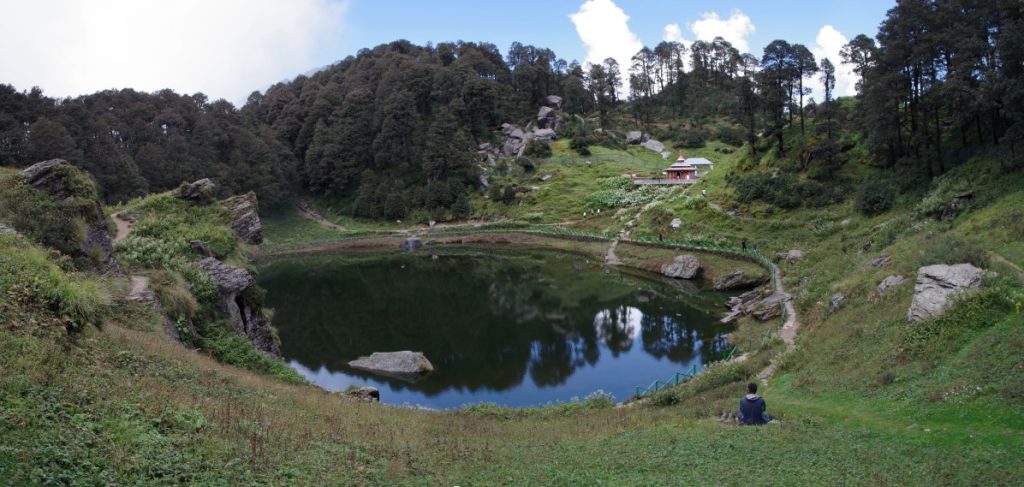
Why Jibhi Is a Hidden Gem Jibhi is a peaceful, worth-visiting village ideal for leisurely travel. It is nestled in the Tirthan Valley of Himachal. Jibhi provides immense peace, unexplored paths, and genuine mountain life in contrast to Manali or Shimla. A well-planned Jibhi itinerary aids in striking a balance between leisure, adventure, and sightseeing. Whether you are looking for a 3-day short escape, 4-day balanced holiday, or 5-day immersive trip, Jibhi has something to offer to everyone be it families, couples or backpackers. Unique Highlight: Because of Jibhi’s verdant meadows and wooden homes, it is referred to as the “mini New Zealand of India.” Pro Tip: To avoid high tourist rush and to take advantage of stunning homestay options, schedule your trip to Jibhi advance especially during the week. What’s in this Blog? Why Jibhi Is a Hidden Gem How to Reach Jibhi Best Time to Visit Jibhi Jibhi Itinerary – 3 Days Jibhi Itinerary – 4 Days Jibhi Itinerary – 5 Days Where to Stay in Jibhi Things to Do in Jibhi & Nearby Local Festivals and Food Pro Travel Tips for Jibhi FAQs Final Thoughts How to Reach Jibhi By Road: It takes 12 to 14 hours to drive 500 km via the Aut tunnel from Delhi to Jibhi. By Train: Chandigarh is the closest station; from there, take a bus or taxi. By Bus: Direct overnight Volvo buses run till Aut, followed by a 1.5-hour local cab. By Air: Take a plane to 60-kilometer-distance Kullu-Manali Airport (Bhuntar). Pro Tip: Motion Sickness is common as mountain curves can be quite steep. So, always carry motion sickness medication when driving. Best Time to Visit Jibhi Spring (March–May): If you love nature & greenery, it’s the perfect time, as there are blossoms and greenery all around. Perfect for trekking too. Summer (June–August): In the month of June to August, there’s the essence of cool climate, refreshing waterfalls to relax, and offbeat escapes. Autumn (September–November): Great time to experience the beauty of golden landscapes, clear skies, and festivals. Winter (December–February): In this snowy paradise, cozy getaways and romantic getaways are ideal for exploring. Pro Tip: Avoid the time of July–August especially if you’re traveling with kids or elderly. Because there’s a high chance of monsoon landslides. Jibhi Itinerary – 3 Days (Short Getaway Plan) Day 1: Stay at riverside homestay for experiencing real sight-seeing beauty and unwind with a bonfire in the evening. Day 2: Explore Chehni Kothi and visit the beautiful Jibhi Waterfall, and have a local Himachali lunch. Day 3: Before departing, don’t forget to visit serene Serolsar Lake and Jalori Pass. For Couples: Arrange a stargazing stroll. Spend your evenings at the riverbank cafés. For Families: Stay away from rough & lengthy hikes especially if you’ve come with children or elders. Better to opt for shorter treks like Jibhi Waterfall. For Backpackers: Stay in hostels to network with other fellow tourists. It’s a better opportunity to exchange trekking advice. Pro Tip: In Jibhi, get up early as days are shorter. Because the sun sets quickly in the valley, so plan your itinerary accordingly. Jibhi Itinerary – 4 Days (Balanced Trip Plan) Day 1: Arrival, riverside walk, and local café visit. Day 2: Day trip to Tirthan Valley, trout fishing, and village exploration. Day 3: Serolsar Lake picnic and hike up Jalori Pass. Day 4: Explore the temples and Banjar village while shopping for handicrafts. For Couples: Go to Shoja for a day trip to take pictures of the sunset. For Families: Incorporate Banjar village to experience local cuisine and culture. For Backpackers: Extend to Tirthan Valley. A must try meal is trout fishing. Pro Tip: Better to rent a comfortable scooter locally for the mobility between villages. Jibhi Itinerary – 5 Days (In-Depth Experience) Day 1: Check-in to your home-stay. Have a delicious & authentic local Himachali thali dinner to start with a local vibe. Day 2: Trek to a waterfall and explore towards the Tirthan Valley. Day 3: A full-day hike up Jalori Pass and lakeside relaxation. Day 4: Must visit Shoja, take walks for photography, and discover hidden meadows. Day 5: For Cultural immersion better to have cooking sessions with locals. For Couples: For better privacy and bonfires experience, it is ideal to go for wooden cottages. For Families: Dedicate a day for Himachali meals and local cooking classes. For Backpackers: Add the Great Himalayan National Park on your list of places to visit. Pro Tip: To visit Great Himalayan National Park, you need to add an extra night in your trip. Where to Stay in Jibhi Homestays: Suitable for genuine Himachali hospitality. Cottages: Comfortable wooden accommodations with views of pine forests. Budget Hostels: Excellent for lone travelers and backpackers. Luxury Resorts: Perfect for couples looking for comfort and privacy. Pro Tip: Make your reservations for homestays in advance. Especially during summer and New year, it’s a smart move to book in prior. Jibhi has a lot of different lodging choices, from riverside hostels to comfortable wooden cottages. Your choice must be based on what traveller you are, whether you are backpacker, traveling with family, or traveling as a couple. For Couples : Romantic Cottages: There is the availability of private wooden cottages with fireplaces and mountain-view cottages for couples. Boutique Stays: Riverside cabins provide seclusion and candlelight dinners. Luxury Resorts: Luxury resorts are ideal for a couple’s honeymoon or anniversary trips. Pro Tip: Ask for cottages with valley-viewing balconies for an unforgettable sunrise experience. For Families : Family-Friendly Homestays: Homestays having big spacious rooms with home-cooked meals and warm hospitality. Cottages with Kitchenettes: It is perfect if you extended your stays with children; Local Villager Homes: Excellent for cross-cultural interactions. It provides a safer environment to families. Pro Tip: For the availability of nearby markets and medical facilities, it is better to choose stays near Banjar or Shoja. For Backpackers: Budget Hostels: You can meet fellow travelers in the common areas and dorms. Eco-Stays: Reasonably priced mud homes or wooden huts close to



